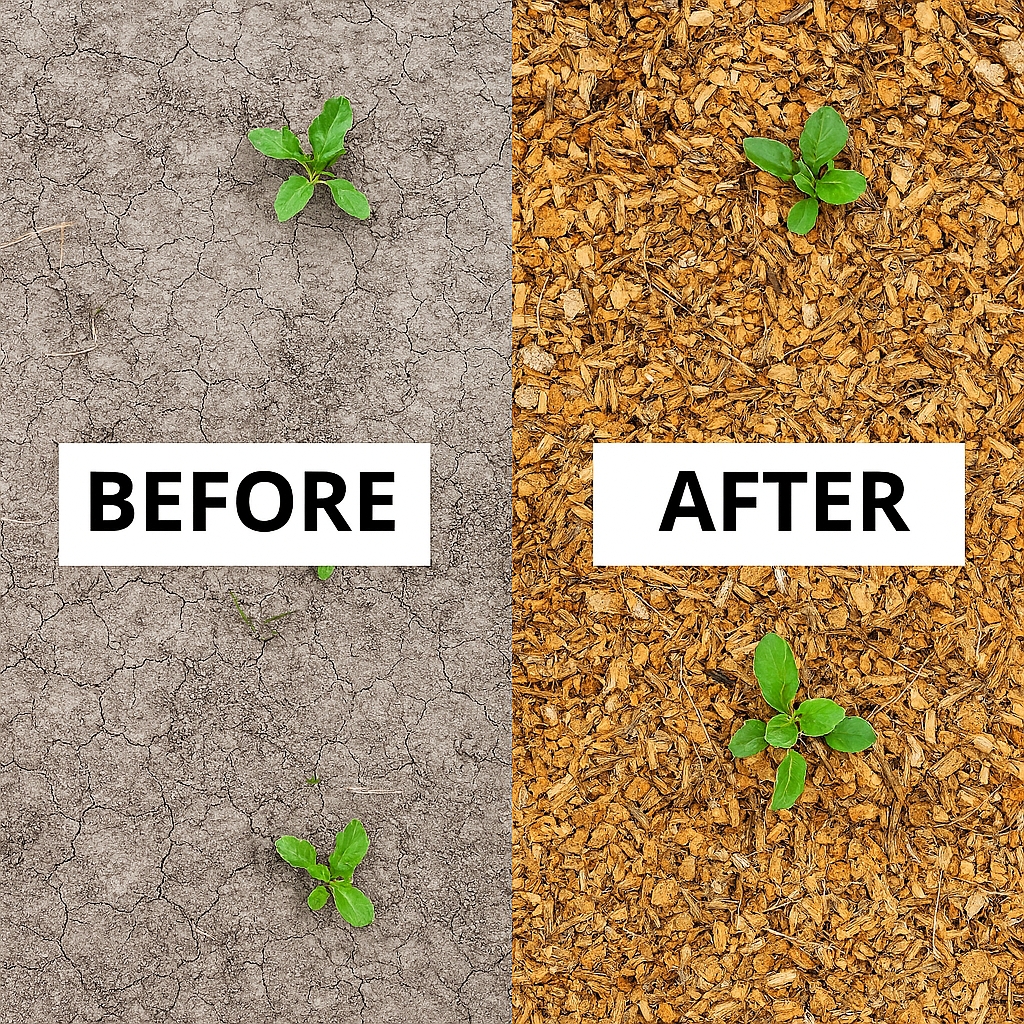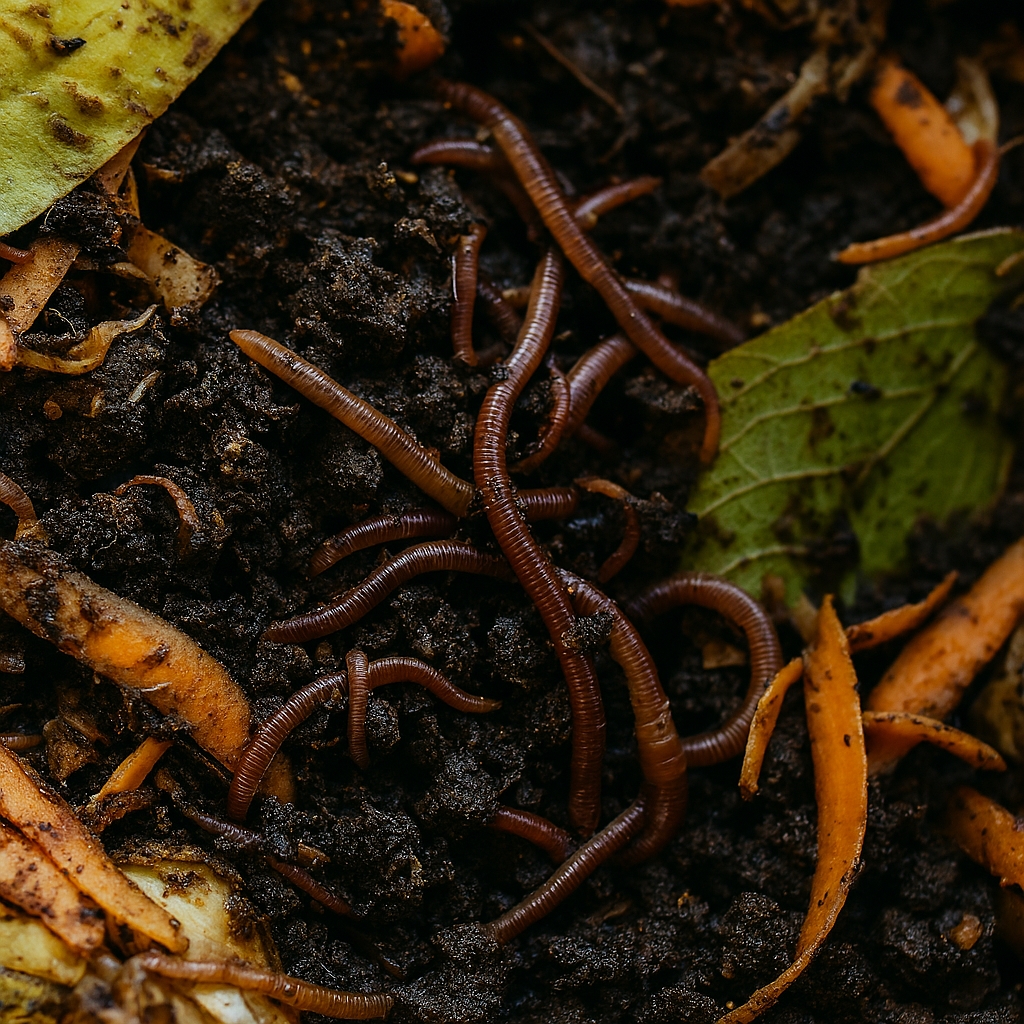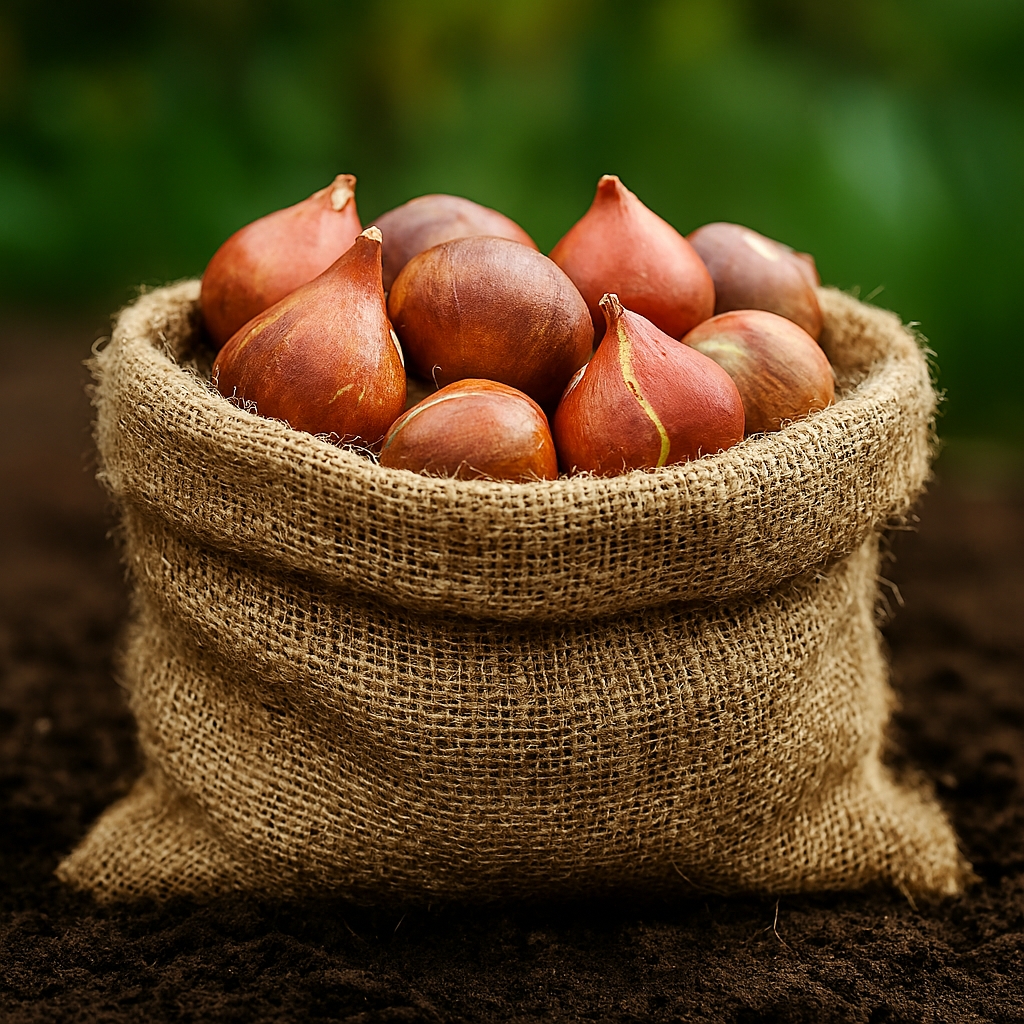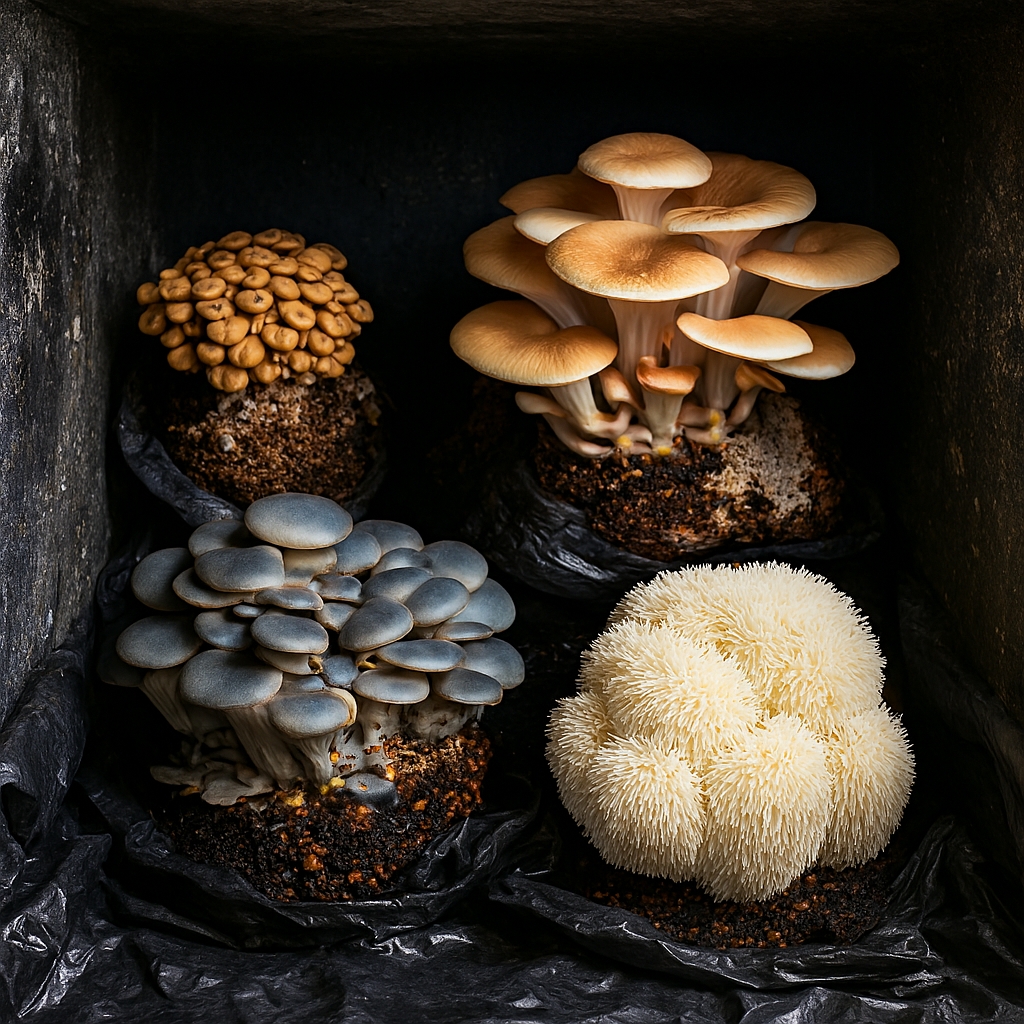Mulch In Dry And Drought Areas – Why Mulch Matters
Mulch is one of the most effective tools for conserving soil moisture in regions that face prolonged dryness or drought. By covering the soil surface with organic or inorganic materials, mulch reduces evaporation, stabilizes soil temperature, and improves plant resilience. Farmers, gardeners, and landscapers in arid climates often rely on mulch to protect crops and ornamental plants from stress.
Mulch also plays a role in preventing erosion, which is a common issue in dry areas where wind and water can strip away topsoil. The practice is not new, but modern research has highlighted its importance in sustainable agriculture. Mulch can be made from natural materials like straw, bark, and compost, or synthetic options such as plastic films. Each type has unique benefits depending on the environment and crop type. In drought-prone regions, mulch is not just a gardening accessory but a survival strategy for plants. Understanding how mulch works and applying it correctly can make the difference between thriving vegetation and barren soil.

Soil Moisture Retention – Key To Plant Survival
Mulch acts as a protective barrier that reduces water loss from the soil surface. In dry climates, evaporation rates are high, and mulch slows this process significantly. Organic mulches like straw, hay or wood chips absorb water and hold it while releasing it slowly into the soil. Inorganic mulches such as gravel reflect sunlight and reduce heat buildup. Studies show that mulched soil retains up to 25 percent more moisture compared to bare soil.
This retention is critical for crops that require consistent hydration. Mulch also prevents crust formation on the soil surface, allowing rainwater or irrigation to penetrate more effectively. Without mulch, water often runs off instead of soaking into the ground. Farmers in arid regions often combine mulching with drip irrigation to maximize efficiency. The synergy between mulch and irrigation ensures that every drop of water is used wisely.
Moisture Retention Comparison
| Mulch Type | Moisture Retention | Heat Reduction | Best Use Case |
|---|---|---|---|
| Straw | High | Moderate | Vegetable gardens |
| Wood Chips | Moderate | High | Orchards and landscapes |
| Gravel | Low | High | Decorative dry landscapes |
| Plastic Film | Very High | Very High | Commercial crop production |
Temperature Regulation – Shielding Roots From Heat
Mulch moderates soil temperature, keeping it cooler during hot days and warmer during cold nights. This regulation is vital in drought-prone areas where extreme temperatures can damage plant roots. Organic mulches insulate the soil by trapping air within their structure. Inorganic mulches like stones reflect sunlight, reducing direct heat exposure.
Stable soil temperatures encourage root growth and nutrient absorption. Without mulch, soil temperatures can fluctuate by more than 10 degrees in a single day. Such fluctuations stress plants and reduce productivity. Mulch also protects beneficial microorganisms that thrive in stable conditions. These microorganisms enhance soil fertility, which is crucial in dry regions where nutrients are often scarce. Farmers often notice healthier root systems in mulched fields compared to bare soil. Temperature regulation is therefore a hidden but powerful benefit of mulching.
Benefits Of Temperature Regulation
- Protects roots from heat stress
- Encourages steady nutrient absorption
- Supports beneficial microorganisms
- Reduces soil temperature fluctuations
- Improves crop resilience
- Prevents soil hardening
- Enhances seed germination rates
- Reduces irrigation frequency
- Promotes long-term soil health
- Creates favorable microclimates
Weed Suppression – Conserving Water For Crops
In dry areas, weeds compete aggressively with crops for limited water. By reducing weed populations, mulch ensures that more moisture is available for desired plants. Organic mulches like bark or straw physically cover the soil, preventing weed germination. Plastic mulches create a complete barrier, eliminating nearly all weed growth. Weed suppression reduces the need for herbicides, which can be costly and environmentally harmful. Farmers save both water and money by using mulch as a natural weed control method. Weeds also reduce crop yields by competing for nutrients, so their suppression is doubly beneficial. Mulch provides a sustainable alternative to chemical weed management. In drought-prone regions, this advantage is particularly valuable.
Weed Suppression Effectiveness
| Mulch Type | Weed Control Level | Cost Efficiency | Environmental Impact |
|---|---|---|---|
| Straw | Moderate | High | Positive |
| Bark | High | Moderate | Positive |
| Plastic Film | Very High | Moderate | Neutral |
| Gravel | Low | High | Neutral |
Soil Erosion Prevention – Protecting The Land
Mulch reduces soil erosion by shielding the surface from wind and water impact. In dry areas, strong winds can blow away valuable topsoil. Mulch anchors the soil, preventing displacement. Rainfall, though rare in drought regions, often comes in heavy bursts that wash away unprotected soil. Mulch absorbs the impact of raindrops, reducing runoff and erosion. Organic mulches decompose and break down over differnet time frames, adding organic matter that further stabilizes the soil.
Inorganic mulches like gravel provide long-term erosion control without decomposition. Farmers often use mulch on slopes to prevent landslides and soil loss. Erosion prevention is critical for maintaining soil fertility in arid climates. Without mulch, soil degradation accelerates, making farming unsustainable. Mulch therefore plays a protective role beyond water conservation.
Key Advantages Of Erosion Control
- Shields soil from wind damage
- Reduces water runoff impact
- Adds organic matter to soil
- Prevents landslides on slopes
- Maintains soil fertility
- Reduces desertification risks
- Improves long-term sustainability
- Protects fragile ecosystems
- Enhances crop stability
- Supports reforestation projects
Pest Management – Reducing Crop Damage
Mulch helps manage pests by creating unfavorable conditions for harmful insects. Certain organic mulches release natural compounds that repel pests. For example, cedar bark is known to deter termites and ants. Mulch also reduces direct soil exposure, limiting pest access to plant roots. In dry areas, pests often thrive in bare soil, but mulch disrupts their habitat. Beneficial insects, however, find shelter in mulch, creating a natural balance. Farmers often notice fewer infestations in mulched fields compared to unprotected soil. Mulch also reduces the spread of soil-borne diseases by acting as a barrier. This protective role is vital in drought-prone regions where crops are already stressed. Pest management through mulching is therefore both natural and effective.
Pest Management Benefits Of Mulching
| Mulch Type | Pest Repellent Ability | Disease Barrier | Beneficial Insect Support |
|---|---|---|---|
| Cedar Bark | High | Moderate | Moderate |
| Straw | Low | High | Strong |
| Compost | Moderate | High | Strong |
| Gravel | None | Moderate | Low |
Carbon Sequestration – Fighting Climate Change
Mulch contributes to carbon sequestration by storing carbon in the soil. Organic mulches decompose and add carbon-rich matter to the ground. This process reduces atmospheric carbon dioxide levels. In dry areas, carbon sequestration is critical for combating desertification. Mulch also supports microbial activity that stabilizes carbon in the soil. Farmers who use mulch contribute to climate change mitigation. Inorganic mulches do not add carbon but protect soil organic matter from loss. Carbon sequestration improves soil fertility and resilience. Mulch therefore plays a role beyond agriculture, supporting global sustainability. This benefit highlights the environmental importance of mulching in drought-prone regions.
Climate Benefits Of Mulching
- Stores carbon in soil
- Reduces atmospheric carbon dioxide
- Supports microbial stabilization
- Improves soil fertility
- Combats desertification
- Enhances resilience to climate change
- Promotes sustainable farming
- Reduces reliance on chemical fertilizers
- Strengthens ecological balance
- Contributes to global sustainability
Cost Reduction – Saving Resources
Mulch reduces farming costs by lowering water and fertilizer needs. In dry regions, irrigation is expensive, but mulch conserves water. Fertilizer use decreases as mulch enriches soil naturally. Weed suppression reduces herbicide expenses. Pest management through mulch lowers pesticide costs. Farmers save money while improving productivity. Mulch also reduces labor by minimizing soil maintenance. Long-term use of mulch improves sustainability, reducing future expenses. Cost reduction is a major incentive for adopting mulching practices. In drought-prone areas, saving resources is essential for survival.
Cost Savings From Mulching
| Expense Type | Reduction Level | Long-Term Benefit |
|---|---|---|
| Irrigation | High | Sustainable water use |
| Fertilizers | Moderate | Improved soil fertility |
| Herbicides | High | Natural weed control |
| Pesticides | Moderate | Balanced ecosystems |
| Labor | Moderate | Reduced soil maintenance |
Aesthetic Value – Enhancing Landscapes
Mulch improves the visual appeal of gardens and landscapes. Organic mulches like bark and wood chips create a natural look. Inorganic mulches such as gravel add decorative value. Aesthetic value is important in residential and public spaces. Mulch also reduces dust, keeping areas cleaner. Landscapers often use mulch to highlight plant beds. In dry regions, mulch prevents barren, dusty appearances. Attractive landscapes improve community well-being. Mulch therefore serves both functional and aesthetic purposes. This dual role makes it popular in both farming and urban settings.
Aesthetic Benefits Of Mulching
- Creates natural appearance
- Adds decorative value
- Reduces dust in dry areas
- Highlights plant beds
- Improves community spaces
- Enhances property value
- Supports clean environments
- Provides contrast in design
- Reduces barren soil look
- Combines beauty with function

Nutrient Cycling – Building Fertile Soil
Mulch contributes to nutrient cycling by breaking down and enriching the soil. Organic mulches such as straw, leaves, and compost decompose over time, releasing essential nutrients. Nutrient cycling supports plant growth without the need for excessive chemical fertilizers. Mulch also enhances microbial activity, which accelerates decomposition. Inorganic mulches do not decompose but can still protect soil nutrients by preventing leaching. Farmers in arid climates often combine mulch with composting to maximize nutrient availability. Healthy soil is the foundation of sustainable agriculture, and mulch plays a central role in maintaining it. By recycling nutrients, mulch reduces waste and promotes ecological balance. This benefit is especially important in drought-prone areas where resources are scarce.
Nutrient Contribution Of Mulch Types
| Mulch Type | Nutrient Release | Microbial Support | Longevity |
|---|---|---|---|
| Straw | High | Strong | Short |
| Compost | Very High | Very Strong | Short |
| Bark | Moderate | Moderate | Medium |
| Gravel | None | None | Long |
Biodiversity Support – Encouraging Life In Soil
Mulch fosters biodiversity by creating a favorable environment for soil organisms. Earthworms, insects, and beneficial fungi thrive under mulched soil. These organisms improve soil structure and nutrient availability. Biodiversity enhances resilience against pests and diseases. Mulch also provides shelter for small animals and insects that contribute to pollination. In dry areas, biodiversity is often limited, but mulch helps restore balance. Farmers notice healthier ecosystems in mulched fields compared to bare soil. Biodiversity also improves water infiltration and retention. Mulch therefore acts as a catalyst for ecological restoration. Supporting biodiversity is a hidden but vital benefit of mulching in drought-prone regions.
Biodiversity Benefits Of Mulching
- Encourages earthworm activity
- Supports beneficial fungi
- Provides habitat for insects
- Enhances pollination rates
- Improves soil aeration
- Reduces pest outbreaks
- Strengthens ecological resilience
- Promotes natural nutrient cycling
- Increases soil organic matter
- Restores balance in arid ecosystems
Crop Yield Improvement – Boosting Productivity
Mulch directly impacts crop yield by improving soil conditions. Farmers in dry regions often report higher yields when mulching is applied. Moisture retention ensures crops receive consistent hydration. Temperature regulation reduces stress, allowing plants to grow steadily. Weed suppression ensures that crops do not compete for water and nutrients. Nutrient cycling enhances fertility, further boosting productivity. Mulch also reduces the need for chemical inputs, lowering costs. Studies show yield increases of up to 30 percent in mulched fields compared to bare soil. This improvement is critical in drought-prone areas where food security is at risk. Mulch therefore becomes a tool for both survival and prosperity.
Yield Impact Of Mulching
| Crop Type | Yield Increase | Water Savings | Fertilizer Reduction |
|---|---|---|---|
| Vegetables | 20-30% | High | Moderate |
| Orchards | 15-25% | Moderate | High |
| Grains | 10-20% | Moderate | Moderate |
| Vineyards | 15-30% | High | High |
Water Efficiency – Maximizing Every Drop
Mulch enhances water efficiency by reducing evaporation and improving infiltration. In drought-prone areas, water is the most precious resource. Mulch ensures that irrigation and rainfall are used effectively. Farmers often combine mulch with drip irrigation for maximum efficiency. This combination reduces water waste and improves crop survival. Mulch also prevents runoff, ensuring water penetrates the soil. By conserving water, mulch reduces the frequency of irrigation. This efficiency lowers costs and supports sustainability. Water efficiency is critical in regions where scarcity threatens agriculture. Mulch therefore plays a central role in water management strategies.
Water Efficiency Benefits
- Reduces evaporation losses
- Improves infiltration rates
- Prevents runoff and waste
- Enhances drip irrigation effectiveness
- Reduces irrigation frequency
- Lowers water costs
- Supports sustainable farming
- Improves crop survival rates
- Conserves groundwater reserves
- Strengthens resilience to drought
Soil Structure Improvement – Creating Strong Foundations
Mulch improves soil structure by preventing compaction and enhancing aeration. Organic mulches decompose, adding organic matter that binds soil particles. This binding creates a crumbly texture that supports root growth. Improved soil structure enhances water infiltration and retention. In dry areas, soil often becomes hard and compacted, limiting plant growth. Mulch reverses this process by softening the soil. Inorganic mulches protect the surface from erosion, maintaining structure. Farmers often notice deeper root systems in mulched fields. Strong soil structure supports long-term sustainability. Mulch therefore builds the foundation for resilient agriculture in drought-prone regions.
Soil Structure Benefits Of Mulching
| Mulch Type | Compaction Prevention | Organic Matter Addition | Root Support |
|---|---|---|---|
| Straw | High | High | Strong |
| Compost | Very High | Very High | Strong |
| Bark | Moderate | Moderate | Moderate |
| Gravel | Low | None | Moderate |
Long-Term Sustainability – Building Resilient Systems
Mulch supports long-term sustainability by improving soil health and reducing resource use. Organic mulches add nutrients, while inorganic mulches provide durable protection. Sustainability is critical in drought-prone regions where resources are limited. Mulch reduces dependence on chemical inputs, lowering environmental impact. It also supports biodiversity, which strengthens ecosystems. Farmers benefit from consistent yields and reduced costs. Communities gain from improved landscapes and food security. Mulch therefore contributes to sustainable development goals. Its role extends beyond agriculture into environmental stewardship. Long-term sustainability is one of the greatest advantages of mulching.
Sustainability Benefits Of Mulching
| Benefit Area | Impact Level | Contribution |
|---|---|---|
| Soil Health | Very High | Fertility and resilience |
| Water Use | High | Conservation and efficiency |
| Biodiversity | High | Ecological balance |
| Cost Reduction | Moderate | Resource savings |
| Climate Impact | High | Carbon sequestration |
Microclimate Creation – Supporting Local Environments
Mulch creates microorganisms and microclimates that benefit plants and soil ecology. By moderating temperature and moisture, mulch establishes stable conditions in small areas. These microclimates allow sensitive plants to thrive even in harsh drought conditions. Mulch also supports beneficial insects and microorganisms that prefer consistent environments. Farmers often notice healthier growth in mulched zones compared to bare soil. Microclimates reduce stress on crops, improving resilience. In dry regions, this stability is critical for survival. Mulch therefore acts as a buffer against environmental extremes. Creating microclimates is one of the subtle but powerful roles of mulching. It transforms hostile conditions into supportive habitats.
Microclimate Benefits Of Mulching
| Benefit Area | Impact Level | Example Outcome |
|---|---|---|
| Temperature | High | Stable root zones |
| Moisture | Very High | Reduced evaporation |
| Biodiversity | Moderate | Increased insect activity |
| Crop Resilience | High | Improved survival rates |
| Soil Fertility | Moderate | Enhanced microbial growth |
Root Development – Strengthening Plant Foundations
Mulch supports root development by maintaining favorable soil conditions. Moisture retention ensures roots have consistent access to water. Temperature regulation prevents stress that can stunt root growth. Mulch also prevents soil compaction, allowing roots to penetrate deeply. Strong root systems improve plant stability and nutrient absorption. In dry areas, deep roots are essential for accessing limited water reserves. Farmers often observe more extensive root networks in mulched fields. Root development directly impacts crop yield and resilience. Mulch therefore strengthens the foundation of plant health. This benefit is critical in drought-prone regions where survival depends on strong roots.
Root Development Benefits
- Provides consistent moisture
- Prevents soil compaction
- Encourages deep penetration
- Improves nutrient absorption
- Strengthens plant stability
- Enhances drought resilience
- Supports long-term growth
- Reduces transplant shock
- Promotes healthier ecosystems
- Builds strong agricultural foundations
Organic Matter Addition – Enriching Soil Quality
Mulch adds organic matter to soil as it decomposes. This enrichment improves fertility and structure. Organic matter binds soil particles, creating a crumbly texture. It also enhances water retention and infiltration. In dry areas, organic matter is often scarce, making mulch essential. Decomposition supports microbial activity, which further improves soil health. Farmers often combine mulch with compost for maximum enrichment. Organic matter addition reduces reliance on chemical fertilizers. This process supports sustainable agriculture in drought-prone regions. Mulch therefore plays a vital role in enriching soil quality.
Organic Matter Contribution
| Mulch Type | Organic Matter Addition | Decomposition Speed | Soil Fertility Impact |
|---|---|---|---|
| Straw | High | Fast | Strong |
| Compost | Very High | Very Fast | Very Strong |
| Bark | Moderate | Slow | Moderate |
| Gravel | None | None | None |
Desertification Prevention – Protecting Fragile Lands
Mulch helps prevent desertification by stabilizing soil and conserving moisture. Desertification is a major threat in drought-prone regions. Mulch reduces erosion, which is a key driver of land degradation. It also supports vegetation growth, which anchors soil. By conserving water, mulch ensures plants can survive longer. This survival slows the spread of barren land. Farmers and communities use mulch as part of reforestation projects. Mulch therefore plays a role in combating desert expansion. Preventing desertification is critical for food security and ecological balance. Mulch becomes a frontline defense against land degradation. Its role in protecting fragile lands cannot be overstated.
Desertification Prevention Benefits
- Stabilizes soil surfaces
- Conserves moisture reserves
- Supports vegetation growth
- Reduces erosion risks
- Anchors soil with roots
- Slows barren land spread
- Strengthens ecological balance
- Improves food security
- Supports reforestation projects
- Combats desert expansion
Community Benefits – Supporting Shared Resources
Mulch provides benefits that extend beyond individual farms or gardens. Communities gain from improved landscapes and reduced dust. Public spaces become more attractive and sustainable with mulch. Mulch also reduces water demand, supporting shared resources. In drought-prone regions, water conservation benefits everyone. Community gardens often use mulch to improve productivity. Mulch supports collective resilience against climate challenges. It also reduces maintenance costs for public areas. Communities therefore benefit socially, economically, and environmentally. Mulch becomes a shared tool for sustainability.
Community Benefits Of Mulching
| Benefit Area | Community Impact | Example Outcome |
|---|---|---|
| Water Use | High | Reduced demand on shared supplies |
| Public Spaces | Moderate | Cleaner, more attractive areas |
| Food Security | High | Productive community gardens |
| Cost Savings | Moderate | Lower maintenance expenses |
| Environmental | High | Stronger collective resilience |

Conclusion – Mulch As A Lifeline In Dry Regions
Mulch is more than a gardening technique – it is a lifeline for plants in dry and drought-prone areas. By conserving moisture, regulating temperature, suppressing weeds, and preventing erosion, mulch ensures sustainable crop production and landscape health. Both organic and inorganic mulches have unique roles, and their selection depends on local conditions and goals.
Farmers, gardeners, and communities can benefit from adopting mulching practices to combat the challenges of arid climates. The evidence is clear – mulch improves resilience, reduces resource use, and supports long-term sustainability. In regions where water scarcity threatens livelihoods, mulch becomes a critical ally. Its role in soil health and plant survival cannot be overstated. Mulch is not just a cover for soil but a strategy for survival.
Join The Discussion – Share Your Experience
Mulching in dry areas is a practice that can be done just once or many times to continuelly evolve with new techniques and materials. Have you used mulch in your garden or farm during drought conditions? What type of mulch worked best for you, and how did it impact your plants?
#MulchForDryAreas #SoilConservation #DroughtResilience #SustainableFarming #WaterWiseGardening #ClimateAdaptation #SoilHealth #GardeningTips #AridLandManagement #EcoFriendlyFarming













Leave a Reply